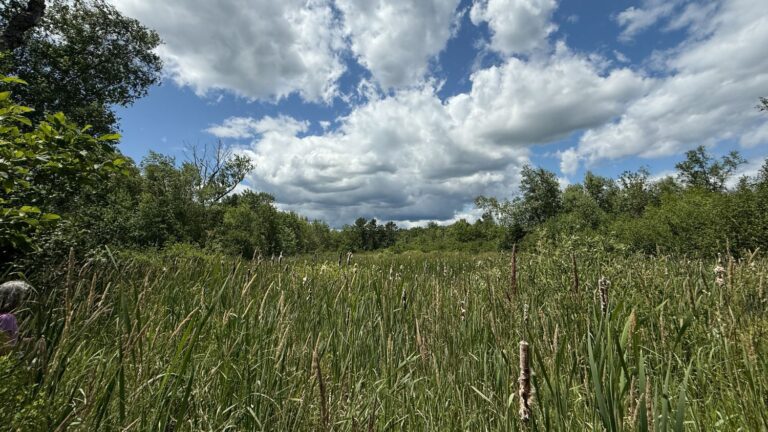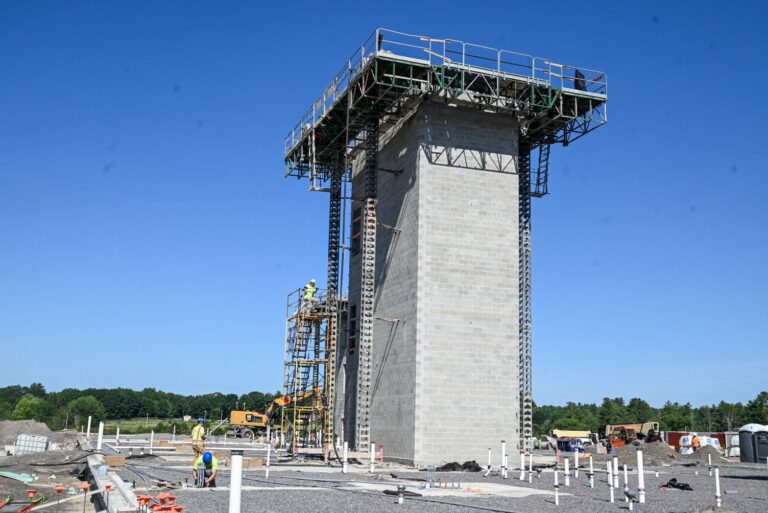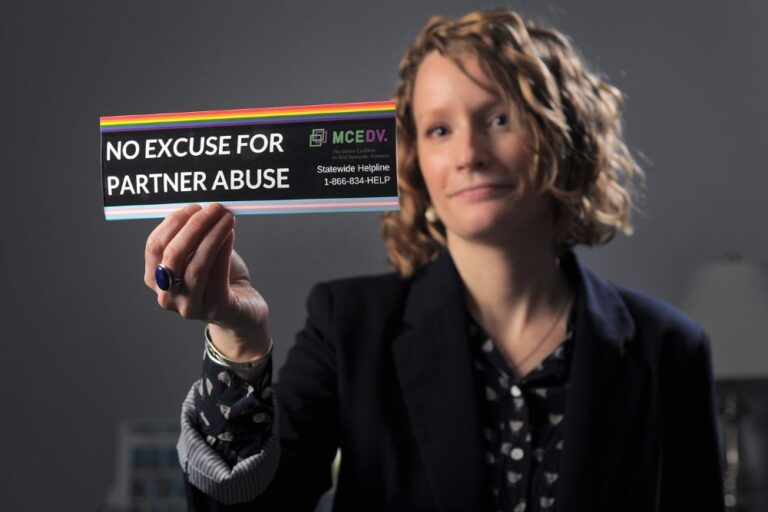A COVID-19 outbreak at a Deer Isle nursing home in late November prompted nine employees — a tenth of its workers — to immediately take a leave of absence. Within two weeks 31 other employees were infected, cutting the available staff nearly in half.
The remaining Island Nursing Home employees worked double shifts, sometimes six straight days to care for the home’s 70 residents.
Matthew Trombley, the senior executive director, was looking for help even before Nov. 24, when the Maine Center for Disease Control and Prevention declared an outbreak at the nursing home. But health care workers are in high demand during a pandemic that has outstripped resources across the country. Trombley contacted 59 staffing agencies but only was able to secure two contracted nurses to help deal with the outbreak, which eventually grew to 90 cases and 12 deaths — Maine’s fourth largest outbreak.
The Maine CDC decided it was time to deploy volunteers into direct patient care for the first time in the pandemic.

“It has been exceedingly difficult to source staff in this location due to its rural nature, but also there are simply very scarce health care worker staffing sources available to anyone at this point,” said Ed Molleo, medical volunteer coordinator with the Maine CDC.
From Dec. 4-15, six volunteers rotated through the nursing home, including a physician, a physician’s assistant and a medical assistant.
Heidi Gillen, administrator in training at the nursing home, said her colleagues didn’t complain during the spiraling outbreak but they were exhausted. It was “rejuvenating” to have additional support from the volunteers.
“I’ll even say it, (the volunteers) were saviors there for a little while,” Gillen said. “They were so kind and understanding, and just willing to do whatever they needed to do. And the fact that they voluntarily put themselves into it says a lot.”
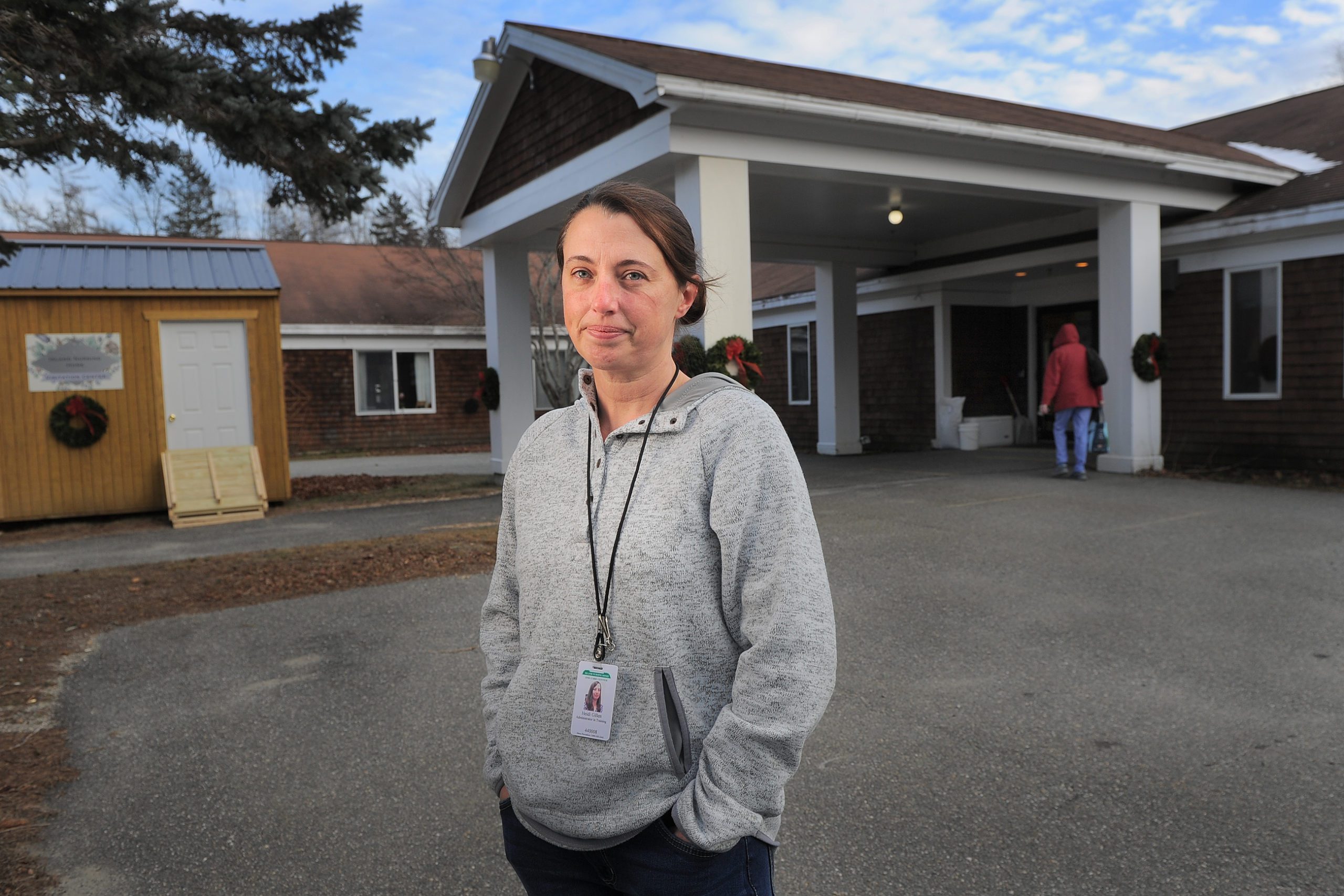
While the CDC dispatched Maine’s first direct care volunteers this month, more than 150 others have contributed in other ways throughout the pandemic, including operating a nurse call line, staffing a warehouse of supplies, and providing grief counseling and psychological first aid. The number of people in the Maine Responds Emergency Health Volunteer System who are ready to serve when needed has grown from 1,300 at the start of the year to 3,100 in December — a 137 percent increase.
“What I usually tell folks is we’re the state of Maine’s insurance policy,” Molleo said. “When things get really bad and it does rise to the level where you know you’ve exhausted all other options, we need to have something that we can bring in to solve the matter at hand.”
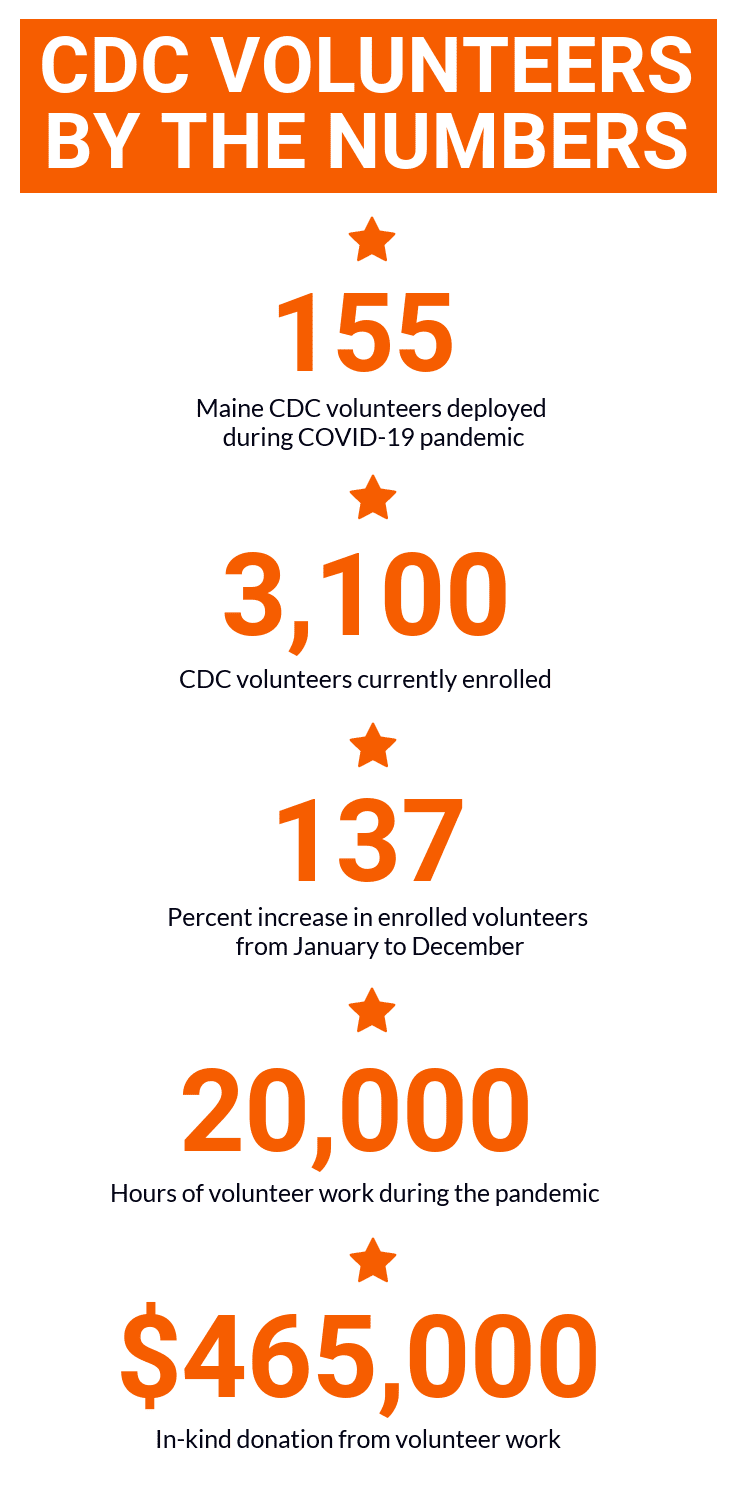
As of Dec. 10, 155 volunteers had racked up more than 20,000 hours of volunteer work during the pandemic, representing about $465,000 in donated service according to FEMA’s volunteer in-kind donation rate of $23.12 per hour, Molleo said.
The last time the CDC called on volunteers for a public health crisis — when about 450 asylum seekers were housed at the Portland Exposition Building for two months during the summer of 2019 — 60 were dispatched.
Current volunteers operate a nurse call line for people with questions about the coronavirus and provide psychological aid for first responders, which was expanded to include people in education such as teachers and administrators. They also enrolled people who have been in contact with a COVID-19 positive person into a symptom monitoring system, provided grief counseling for employees at long-term care facilities, and helped sort personal protective equipment and testing swabs in a warehouse.
Because the bar is high for when volunteers can be deployed, there are more enrolled volunteers than can be put into the field, Molleo said. The CDC conducts background checks, verifies relevant health licenses and provides training. Volunteers are deployed based on availability, skills and sometimes location, although most work is remote during the pandemic.
In the past, volunteers typically were retired but during COVID-19 there has been an increase in current health care workers and recent retirees who hadn’t considered volunteering before, Molleo said. About 2,800 of the 3,100 volunteers who signed up — 90 percent — indicated they had a medical occupation of some sort. The nonmedical volunteers are just as valuable, he said, because they can help with activities such as communication, logistics, planning and administration.
Before COVID-19, volunteers helped with training, emergency management and medical support at sites like cold-weather shelters.
After early reports about the coronavirus in China in late 2019, the volunteer program started preparing in January for the possibility of it reaching Maine, Molleo said.
Early in the pandemic, when state health officials put out calls for volunteers, there was a “significant and heartwarming spike” in enlistments after each request, CDC Director Dr. Nirav Shah said. When he asked for volunteers in March about 200 people responded within 24 hours.
“Being able to tap into volunteers, some of whom have expertise that we may not have had, was very, very helpful for our overall response,” Shah said. “We don’t see that slowing down.”
The ‘canary in the mineshaft’
The outbreak of cases at Island Nursing Home prompted the CDC to deploy volunteers into direct care positions for the first time during the pandemic.
Trombley, the senior executive director, said the nursing home had numerous safety measures before the outbreak, including daily medical screenings for staff, multiple temperature checks a day and weekly testing. But an asymptomatic employee passed the medical screening and multiple temperature checks, and brought the virus in, according to Trombley. The CDC is still investigating the source.
The Department of Health and Human Services inspected the facility last week, but the results are not yet finalized. State inspectors did not find any COVID-19 protocol violations at Island Nursing Home through the end of October, the Bangor Daily News reported.
“We can put up every barrier that we put in place but unless we have the capabilities as a nation to test everybody, every single day, there’s no way that you can stop something that you can’t detect,” he said.
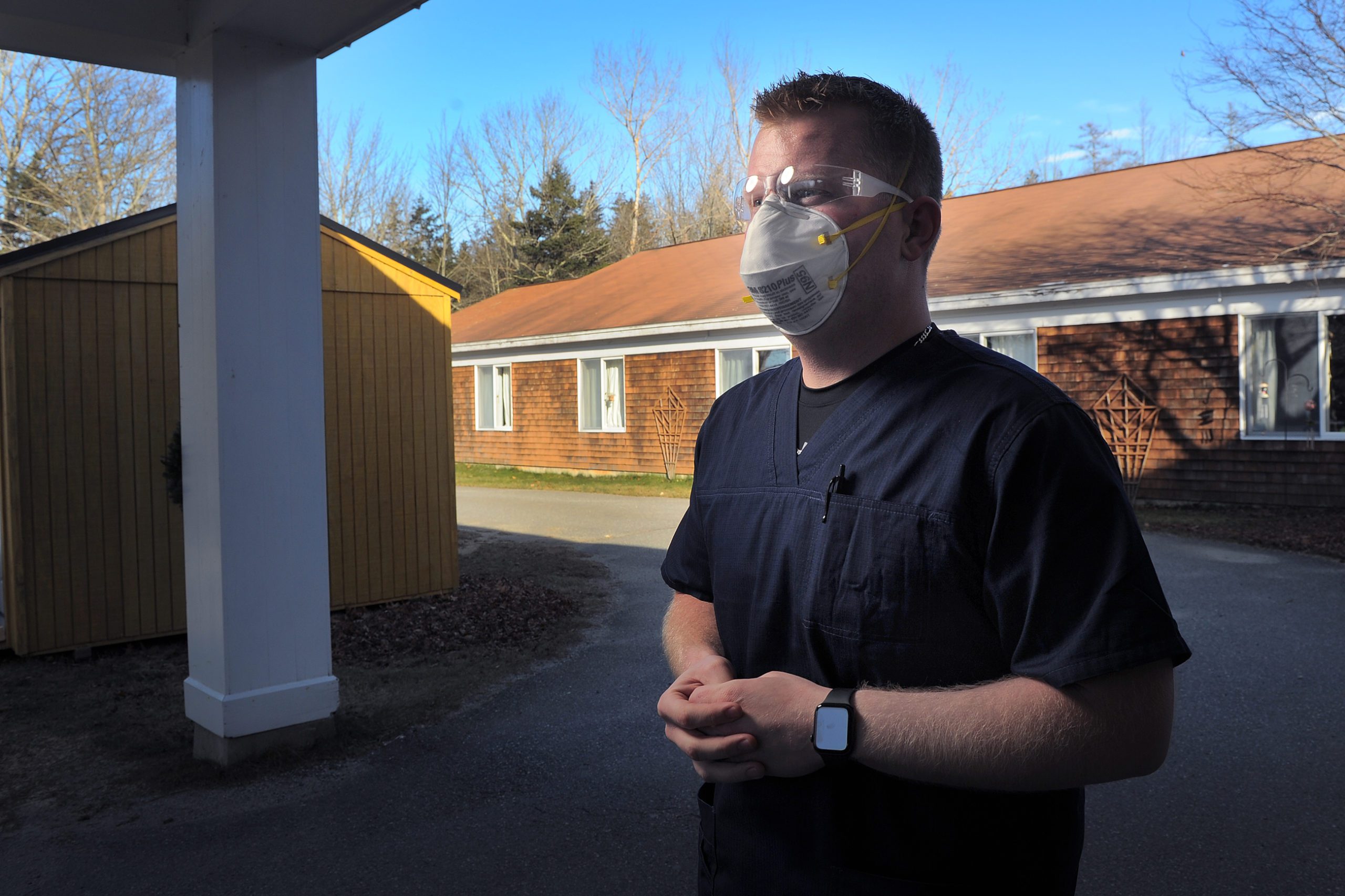
Gillen said she and the rest of the staff have planned for a possible outbreak since March.
“When we had our first case it was like, ‘Oh boy, here we go. It’s happening,’ ” she said.
Personal protective equipment and serial rounds of testing have been consistent challenges during outbreaks at nursing homes throughout the pandemic, Shah said on Dec. 9, “but in recent weeks, what has been new, and what has been deeply concerning and alarming is the fact many facilities have been running into challenges with respect to staff.”
Even before COVID-19, it took 23 agencies 14 weeks to help Island Nursing Home find a licensed practical nurse, Trombley said. The health care worker shortage has only grown during the pandemic.
Trombley said he hasn’t had time to mentally or emotionally process the situation at his facility.
“We are in the business that we care for people 24-7 and there is no downtime, there is no break and unfortunately, the nursing homes are just quite literally the canary in the mineshaft,” he said. “I know that a lot of individuals have kind of painted this picture that coronavirus spontaneously erupts inside of nursing homes or long-term care facilities throughout the United States and throughout the world, but that virus has to come from the community to the facility.”
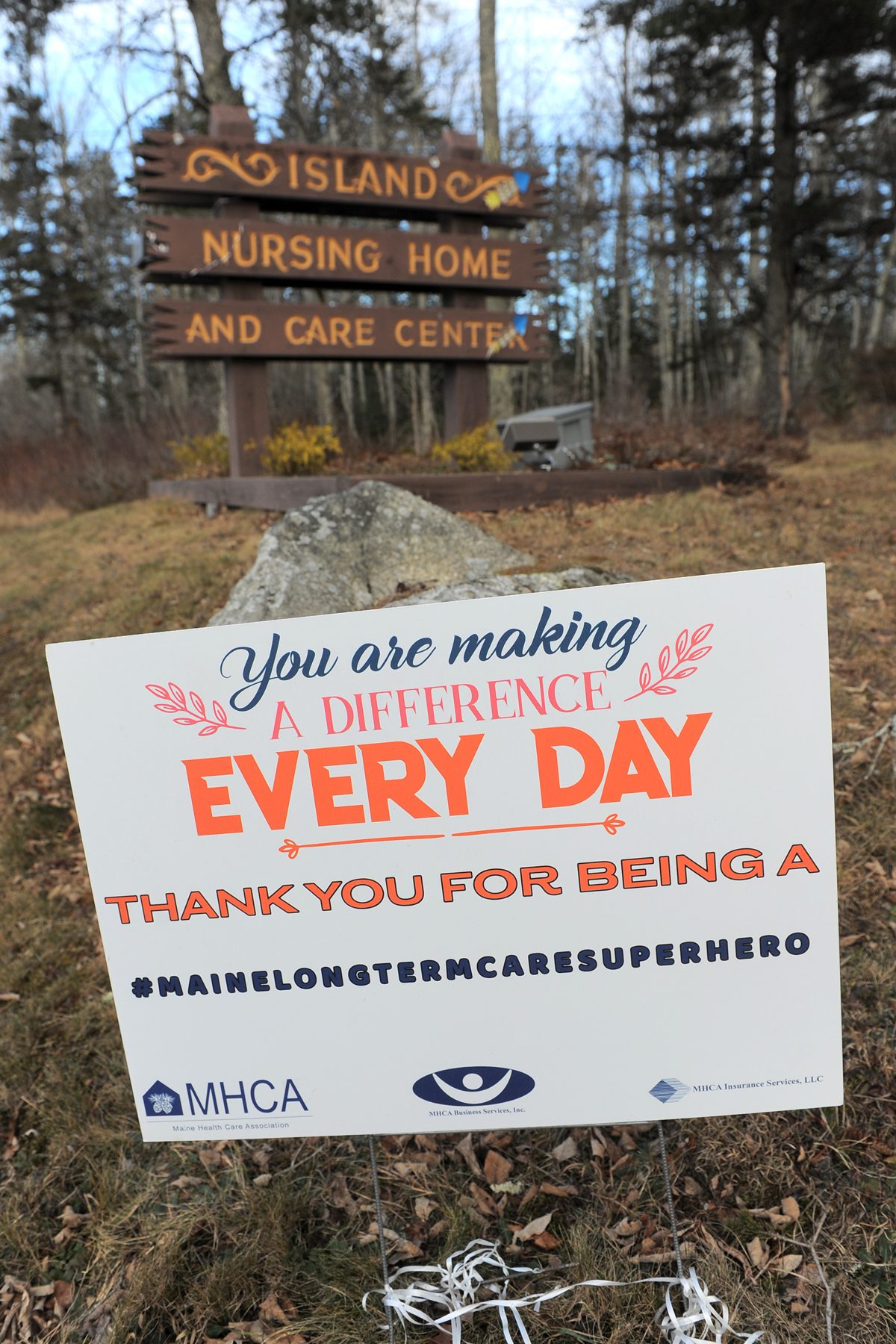
The last volunteers were pulled out on Dec. 15 when Island Nursing Home was approved for federal assistance, and received three nurses and four direct care aids who will be on the ground over the next two weeks, Trombley said.
Staffing remains a challenge but they’ve “turned the corner” on the outbreak, he said. Three residents with COVID-19 are still fighting the virus. All but “a couple” employees who had COVID-19 have recovered and returned to work as of Dec. 16. Trombley said they expected to be fully recovered by Sunday.
“We really appreciate the volunteer program,” Trombley said. “We are anxiously awaiting the vaccine and looking forward to the recovery phase of the virus, but it will certainly be part of our staff and family and history now for Island Nursing Home.”
As the state begins its vaccine rollout, Shah said the CDC will continue to look for volunteer help from community members, health care providers and local officials to plan and administer vaccines.
Frontline workers across the state began receiving the vaccine this week, which Shah said could help reduce the number and magnitude of outbreaks at long-term care facilities like Island Nursing Home.
At the Deer Isle facility this week, Gillen said she and others were putting up holiday decorations.
“A week ago we weren’t even thinking about Christmas decorations,” she said. “(The outbreak) happened quickly. And ended just as quickly.”





